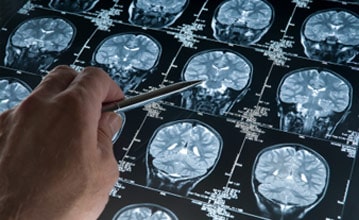Treatment for Tremors in Lansdowne, VA
What is a Tremor?
A tremor is an involuntary movement or spasm. These sudden muscle contractions can occur in various areas of the body, but are most likely to affect the hands, vocal cords, legs, arms, head, and torso.
In order to effectively treat a patient’s tremors, Dr. Tuwiner must first determine the cause and specific type of tremor affecting the individual. Unfortunately, this diagnostic process is not quick and easy for every patient, and can require substantial testing and monitoring to reach a definitive conclusion.
Dr. Seth Tuwiner provides comprehensive testing and treatment for tremors at his office in Leesburg, VA. Learn more about your treatment options and call the Virginia Center for Neuroscience today at (703) 293-5244.
Tremor Types and Categorization
The primary distinction between tremor types is whether they occur when the individual is at rest, or when they are in action. Resting tremors typically affect the hands and fingers, and can be noticed when the person is lying still. In comparison, action tremors will present themselves while the individual is in motion, and are commonly seen in other regions of the body.
Action tremors also have a unique subcategorization that may overlap with one another. These subcategorizations include:
- Postural tremor
- Intention tremor
- Kinetic tremor
- Isometric tremor
- Task-specific tremor
Essential Tremor
The most common type of tremor is known as the essential tremor. These sporadic movements are often very mild, and progress very slowly if they even progress at all. Many essential tremors can be related to a movement disorder, such as difficulty with walking or a hearing disability, though the exact cause of essential tremors is unknown.
Individuals who have a family history of this type of tremor are more likely to experience it themselves. Typically, an essential tremor will be more pronounced in the dominant hand and will be present both when the person is at rest as well as when they are in action.
Dystonic Tremor
Dystonia is a movement disorder that occurs as the result of improperly passed messages from the brain to the muscles. Complications between the brain and muscles cause a variety of symptoms, including overactive and involuntary movements. Such movements may affect any portion of the body, though they can subside if the individual is at a full state of rest.
Parkinsonian Tremor
As the name of this tremor type suggests, these kinds of involuntary movements occur as early symptoms of Parkinson’s disease. Like dystonic tremors, Parkinsonian tremors relate to the brain’s difficulty in translating desired motions and motion control to muscles throughout the body. Individuals of an older age, approximately 60 years and above, are among the most likely to experience Parkinsonian tremors.
Cerebellar Tremor
A cerebellar tremor is a unique type of tremor that belongs to the intention tremor subcategory mentioned above. As a kind of action tremor, cerebellar tremors present themselves when the individual intends to complete a specific motion, but experiences shakiness during this process.
Cerebellar tremors are common among persons who have suffered a stroke previously in life, or who have progressively damaged their brain’s cerebellum via chronic alcoholism.
Orthostatic Tremor
A much more rare type of tremor, orthostatic tremors are rapid muscle contractions of the legs that occur while standing. This muscle motion is so quick that it may not be visibly detected, though it can often be felt by resting a hand on the individual's shaking legs.
Psychogenic Tremor
A psychogenic tremor typically correlates to an underlying psychiatric condition. Individuals who experience post-traumatic stress disorder (PTSD) often encounter these involuntary movements in any area of the body, or across the entire body at once. Added amounts of stress will increase the strength and frequency of psychogenic tremors.
Physiologic Tremor
Physiologic tremors are likely to occur during alcohol withdrawal, as a side effect to a new medication, or when a person’s blood sugar is too low. This more generic type of bodily shaking can happen to any person in any part of the body, but are usually rather easy to resolve after the specific cause has been identified and appropriately treated.
Treatment Options at Virginia Center for Neuroscience
As discussed, the patient’s tremor type and its unique cause will need to be determined in order for Dr. Tuwiner to give their best recommendation in moving forward with treatment. In the event that a cause is not exactly known, such as with an essential tremor, it is still possible for patients to improve and manage their condition given the proper methods.
Physical therapy, medications, lifestyle changes, and even botox injections can help to alleviate the consistent shaking caused by various types of tremors. Special procedures or surgery of the brain may also be needed for individuals who suffer from a tremor that stems from a neurological issue.
Schedule a Consultation
To learn more about tremor treatments, or to receive a personalized evaluation of your concerning symptoms that may be related to one of the tremor types discussed above, please contact the Virginia Center for Neuroscience today to request an appointment. You can reach our office by calling (703) 293-5244.




